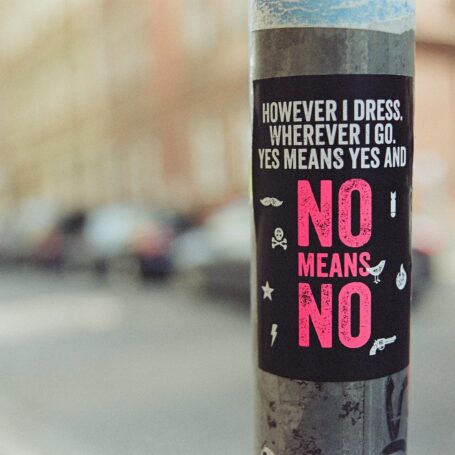How to Live Tweet at an Academic Event
This how-to by SAGE PR and Public Affairs Manager Camille Gamboa first appeared at SAGE Connection.
***
With a brand new year come new opportunities to dust up on our social media skills. In an effort to improve on some social media skills of my own, a few months ago I sat in on webinar setup by VOCUS called “Twitter Power in One Hour,” given by Mark Schaefer, author of The Tao of Twitter. One of the important skills he touched upon is tweeting live from big events. Hoping to learn a little bit more about this topic myself, I’ve organized my notes from this webinar and added useful tips from some experienced live tweeters.
From the society members wanting to get word out about their annual meeting, to the authors publicizing their newest book launch, to the librarians who would like to update everyone on the latest happenings at their annual meetings, this post will give you some best practices for tweeting about a variety of scholarly events as they happen.
First of all, what is live tweeting?
Live tweeting is a way of engaging your Twitter followers by sending minute-by-minute updates about an event as it occurs. Usually, it will cover a time span anywhere from 20 minutes long to a few hours. Live tweeters use the appropriate hashtag relevant to the event they are tweeting about (such as #alamw13 for the ALA Midwinter Meeting and #AERA13 for the AERA annual meeting), which can usually be found on the conference’s website or Twitter profile. This hashtag will give followers context so that they automatically know what you are referring to when you tweet about the event. It will also make sure that tweets are part of the larger conversation of the event.
Why should I live tweet?
The Twitter developers themselves have answered this question quite succinctly by pointing out that when celebrities live tweet at events, their mentions multiply significantly and their daily followers often double or even triple! While those of us who do not have paparazzi following us around may not have the same level of success, it is a good way to engage our followers and to develop your own unique and authentic Twitter voice. And of course, there’s the fact that it’s easy to do (once you get the hang of it), it’s convenient (you can do it anywhere), it’s a free way to engage with your supporters, and… it’s fun!
Live tweeting can also help you as you network with others. By becoming a part of a larger conversation on Twitter, you get to meet a variety of interesting people connected to your work and you have the opportunity to hear their own personal views before you’ve a met them face to face. Later when you do meet in person, you will immediately have some good things to talk about.
Best Practices
Before arriving at your event (preparation is key!)
- Designate an official tweeter –one person to do live tweeting. Giving the responsibility to no one in particular is often the same as giving the responsibility to no one at all. Ernesto Priego, HASTAC scholar and co-founder of The Comics Grid, wrote an article for the Guardian Higher Education in which he pointed out that experienced social media users make the best live tweeters.
- Do your homework – Mark Schaefer wrote that before attending a conference, you should do research on relevant links that you can shorten and link to in your tweets (such as the website for a company that the speaker represents) as well has the Twitter handles (“@twittername”) of speakers and any other tweeters with whom you may want to engage.
While at the event:
- How much should you tweet? This is a tricky question to answer as you don’t want to tweet too much, but you also don’t want to be inconsistent. As the Twitter developers point out, one rule of thumb is to act as you would at a dinner party – don’t try to dominate the conversation, but don’t let your voice fade away.
- Good reasons to tweet:
- To report on something important as it unfolds
- To respond to the tweets of others
- Simply because you feel inspired!
- Good reasons to tweet:
- Be clear and concise – You only have 140 characters in a tweet, so of course brevity is important, but remember to give at least a little bit of context for someone new to the Twitter conversation. Of course, don’t forget to use link shorteners like bit.ly to help you out!
- Use your unique voice – Schaefer also highlighted the importance of being personal. There may be dozens of others out there filling up the Twitter feeds with updates on this same event. What perspective can you offer that no one else can? Don’t be afraid to use fun language that is unique to you and to offer any interesting insider’s perspective that you might have.
- Engage with fellow live tweeters – Remember that you are one person involved in a larger conversation. Engage with others who may be tweeting about the event with retweets or by using their Twitter handle in the middle of your tweets. *Note: If you simply hit “reply”, their Twitter handle will show up at the beginning of your tweet, and only their followers will be able to see it (and not yours). If you want to respond to a tweet, it is better to create a whole new tweet with their Twitter somewhere in the middle so that all of your followers will be able to read your brilliant tweet.
- Using multimedia in your tweets is also very effective, Schaefer pointed out. Don’t be afraid to share the resources the presenters are showing in the room and to take your own photos of the event to tweet out as well. Just be sure that you have permission to do so before the event begins!
- Be respectful! Sometimes people use social media as a way to “anonymously” give others a piece of their mind. Remember, just because you are hiding behind some electronic device doesn’t mean that you shouldn’t be just as respectful as you would be if you were talking face-to-face. No matter what your privacy settings are, tweets are public and easily spread.
Remember, just because you are hiding behind some electronic device doesn’t mean that you shouldn’t be just as respectful as you would be if you were talking face-to-face.
After the event is over:
- Live tweeting can also be beneficial way to summarize and document an event after it has concluded. Not only will your tweets include a nice rundown of what happened, but they can also trigger your memory about the thoughts you had as the event occurred. Check out tools like Storify or Tweet Archivist which use an event’s hashtag to collate all related tweets into permanent conference notes and provide some really cool tweet analyses as well.
A Word of Warning about Live Tweeting New Research
While researchers are often happy to share their new, unpublished research with a select few at conferences, there was a big debate in 2012 about whether it is appropriate to broadcast those findings more widely through live tweeting. Many researchers simply do not feel comfortable with allowing the twitterati to leak out new ideas that aren’t their own. Kathleen Fitzpatrick, director of scholarly communication for the Modern Language Association, offered some useful words of advice on the topic:
If somebody says they’d prefer not to be tweeted or blogged, respect that. Whatever your feelings about the value of openness — and openness ranks very high among my academic values — not everyone shares them. While I have a hard time imagining giving a talk that I didn’t wish more people could hear, I know there are other scholars who are less comfortable with the broadcast of in-process material. And while I might like to nudge them toward more openness, it’s neither my place nor is it worth the potential bad feeling to do so.
Kathleen also pointed out that it is important to differentiate between your own thoughts from the thoughts of others on Twitter, “If you’re live-tweeting a presentation, you should attribute ideas to the speaker but simultaneously make clear that the tweets are your interpretation of what’s being said.” If you are quoting someone directly, be sure to use quotation marks just as you would in your research.





























































































